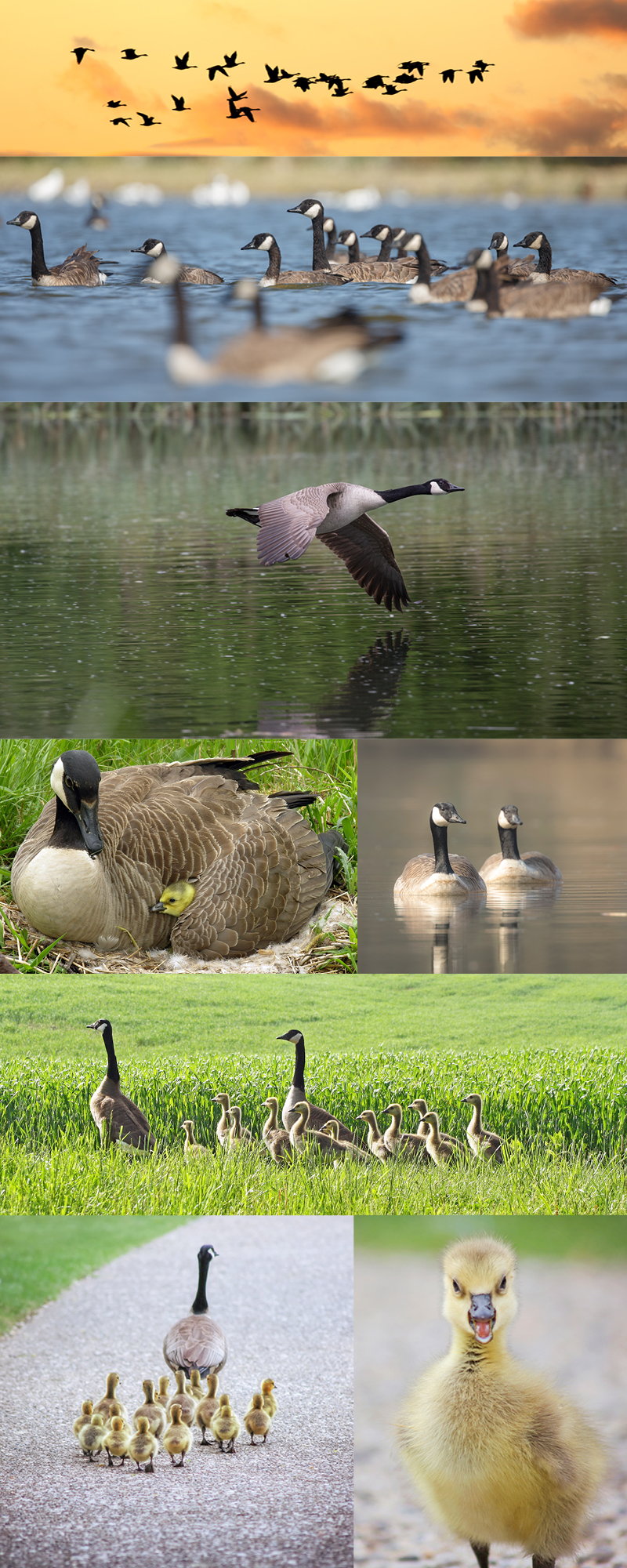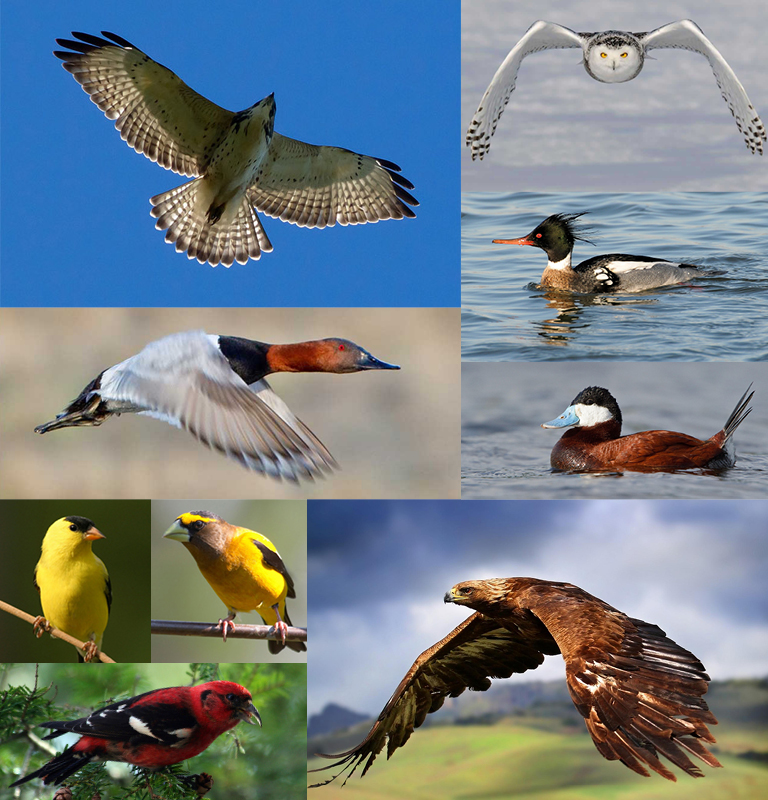“Honka Honk”

Canadian Geese are really, really cool birds!
The sights and sounds of fall are all around us. Just the other day I was out for my morning run, and I enjoyed one of my favorites – the “honk honks” (click here) of the big, black-necked Canada Geese, with their signature white chinstrap, migrating south, filling the sky with an enormous long V formation, just as the sun was coming up over the beautiful Cleveland skyline. I’m kinda fascinated by the birds, their innate migration patterns, and just the fun of watching the big formations fill the sky. (Yes, I love order!) I just don’t like them flying directly over head, it may not end well for me! So, I decided to investigate a bit and share the information with my ornithologist (looked up the spelling!) pals out there. Enjoy, and special thanks to allaboutbirds.org from Cornell University for science and detailed information.
>> Get in the spirit with 20 seconds of geese honking! 🙂
>> Canadian geese fly-over in V formation :15
>> This is funny: Canadian Goose flying alongside a car at 40 mph :48
- Canada Geese are big water birds with a long neck, large body, large webbed feet, and wide, flat bill. They have a black head with white cheeks and chinstrap, black neck, tan breast, and brown back. Canada Geese feed by dabbling in the water or grazing in fields and large lawns and are often seen in flight moving in pairs or flocks; flocks often assume a V formation.
- Birds measure, on average, 30-43 inches in length, with a wingspan of 50-67 inches and weight of between 106 and 317 oz. In comparison, they are larger than a mallard and smaller than a mute swan. In general, the geese get smaller as you move northward, and darker as you go westward. (sun tan?)
- Some migratory populations of the Canada Goose are not going as far south in the winter as they used to. This northward range shift has been attributed to changes in farm practices that makes waste grain more available in fall and winter, as well as changes in hunting pressure and changes in weather.
- Canada Geese live in a great many habitats near water, grassy fields, and grain fields. They are particularly drawn to big, open lawns for two reasons: one, they can digest lots of grass when they are feeding with their young and two, manicured lawns give them a wide, unobstructed view of any approaching predators. That is why they are especially abundant in parks, airports, golf courses, and other areas with expansive lawns. At least 11 subspecies of Canada Goose have been recognized, although only a couple are distinctive.
- Individual Canada Geese from most populations make annual northward migrations after breeding. Nonbreeding geese, or those that lost nests early in the breeding season, may move anywhere from several kilometers to more than 1500 km northward. There they take advantage of vegetation in an earlier state of growth to fuel their molt (feather replacement). Even members of “resident” populations, which do not migrate southward in winter, will move north in late summer to molt.
- The “giant” Canada Goose, Branta canadensis maxima, bred from central Manitoba to Kentucky but was nearly driven extinct in the early 1900s. Programs to reestablish the subspecies to its original range were in many places so successful that the geese have become a nuisance in many urban and suburban areas. – Canada Geese are common and increased between 1966 and 2015, according to the North American Breeding Bird Survey. The total North American population in 2015 was between 4.2 million to over 5.6 million. The species rates a 6 out of 20 on the Continental Concern Score. It is not on the 2016 State of North America’s Birds Watch List. – Some 2.6 million Canada Geese are harvested by hunters in North America, but this does not seem to affect its numbers.
- The oldest known wild Canada Goose was a female, and at least 33 years, 3 months old when she was shot in Ontario in 2001. She had been banded in Ohio in 1969.
- In spring and summer, geese concentrate their feeding on grasses and sedges, including skunk cabbage leaves and eelgrass. During fall and winter, they rely more on berries and seeds, including agricultural grains, and seem especially fond of blueberries. They’re very efficient at removing kernels from dry corn cobs.
- Nests consist of a large open cup on the ground, made of dry grasses, lichens, mosses, and other plant material, and lined with down and some body feathers. Usually on a muskrat mound or other slightly elevated site, near water, they prefer a spot from which they can have a fairly unobstructed view in many directions. Females select the site and does much of nest construction. She adds down feathers and some body feathers beginning after the second egg is laid. She does all the incubation while her mate guards her and the nest.
- Geese have 1 brood per year, usually 2-8 eggs. The incubation period is 25–28 days, with a nestling period of 42–50 days. At hatchling, the chicks are covered with yellowish down and their eyes are open. They leave the nest when they are 1-2 days old, depending on weather, and can walk, swim, feed, and even dive. They have enough energy remaining in their yolk sac to survive 2 days before feeding.
- Soon after they hatch, goslings begin pecking at small objects, and spend most of their time sleeping and feeding. They remain with their parents constantly, though sometimes “gang broods” form, especially in more southern latitudes. These can include at least two broods, and sometimes five or more, that travel, feed, and loaf together, accompanied by at least one adult. Just like when our kids were young!
- Geese mate “assortatively,” larger birds choosing larger mates and smaller ones choosing smaller mates; in a given pair, the male is usually larger than the female.
- During spring, pairs break out from flocks and begin defending territories. Spacing of these pairs is variable and depends on availability of nest sites and population density; where population is large, even after a great many fights birds may end up nesting in view of one another, and some populations are semi-colonial.
- When threatened, displays may involve head pumping, bill opened with tongue raised, hissing, honking, and vibrating neck feathers. When an intruding goose doesn’t retreat, geese may grab each other by breast or throat and hit each other with their wings. Fighting may result in injuries.
- In winter, geese can remain in northern areas with some open water and food resources even where temperatures are extremely cold. Geese breeding in the northernmost reaches of their range tend to migrate long distances to winter in the more southerly parts of the range, whereas geese breeding in southern Canada and the conterminous United States migrate shorter distances or not at all. Individuals tend to return to the same migratory stopover and wintering areas year after year.



